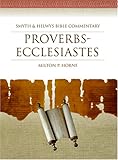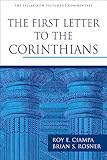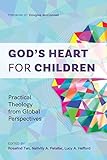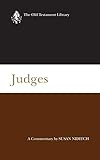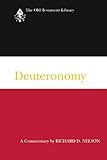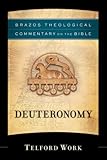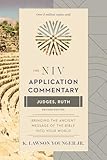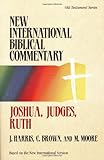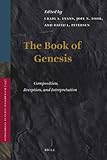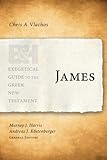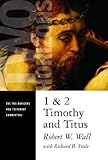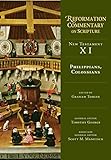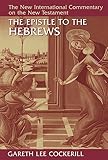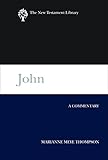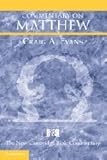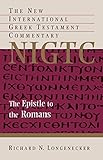Indigenous Oral Communities’ Engagement With The Creation Narrative Of Genesis, With Special Reference To The Naro San Of Botswana
Material type: TextPublication details: Johannesburg South Africa South African Theological Seminary June 2018Description: 210 pages PDF A4 Abstract, TOCDissertation note: Master of Theology (Mth) South African Theological Seminary June 2018 Summary: The principal goal of this research is to understand indigenous oral communities’ engagement with Scripture, especially with the creation narrative of Genesis. It is a study in morality, wherein four sample case studies will be presented. Special attention is given to the Naro San people of Botswana (Chapters 2 and 3), after which three other people groups are studied, namely the Dao of Indonesia, the Baka of Equatorial Africa and the Gonja of Northern Ghana (Chapter 4). The case studies of the four oral people groups aim to show the diversity of affordances and performance of orality present within these communities as it pertains to Scripture engagement. The secondary purposes are to interpret their engagement and to determine its value for Bible translation, oral Scripture engagements and contemporary missiology. This study involves a combination of descriptive, contextual and consolidative approaches while giving attention to the local cultural context and oral communication affordances and performances. The research process entails a review of documented data, personal interviews, group discussions and training interventions for data collection. It also makes use of the structure of the creation narrative in Genesis. The fulfilment of the missiological task to the literate and oral people is contingent on the contextualised way Christians communicate and deliver to audiences and engage them with the gospel message. This study of oral Scripture departs from the premise that orality and literacy both play an essential role in Scripture translation and engagement. The reason for emphasising orality is that this traditionally neglected reality is opening up many exciting possibilities in the translation and communication of Scripture. This will be valuable for all practitioners, whether on the translation or the engagement side, helping them to understand the predominant contextual communication preference of any people group identified to receive and engage with Scripture. Firstly, the study provides a documented context of the Naro San community of D’Kar as a higher orality reliant community and provides the reasons why the creation account of Genesis was specifically chosen as the Scripture portion for engagement with this community. 15Secondly, the study explores the methods of oral communication of one Naro San family, focussing on their engagement with the creation narrative of Genesis. Thirdly, the study compares the Naro San with three other indigenous oral people groups. It explores the aspects of the creation narrative of Genesis which resonate with an oral community. It deals with a structure of the creation narrative of Genesis, acknowledges the existence of creation stories in traditional folk lore, puts it into the context of missiology and documents the oral Scripture engagement using the creation narrative of Genesis. Finally, the study recommends guidelines for Scripture translation and engagement that can be implemented by Scripture practitioners. The advice is based on the findings of the Scripture engagement in the case studies. The recommendations are designed around the different communication methodologies of these indigenous oral people to effectively engage them with God’s story.
TextPublication details: Johannesburg South Africa South African Theological Seminary June 2018Description: 210 pages PDF A4 Abstract, TOCDissertation note: Master of Theology (Mth) South African Theological Seminary June 2018 Summary: The principal goal of this research is to understand indigenous oral communities’ engagement with Scripture, especially with the creation narrative of Genesis. It is a study in morality, wherein four sample case studies will be presented. Special attention is given to the Naro San people of Botswana (Chapters 2 and 3), after which three other people groups are studied, namely the Dao of Indonesia, the Baka of Equatorial Africa and the Gonja of Northern Ghana (Chapter 4). The case studies of the four oral people groups aim to show the diversity of affordances and performance of orality present within these communities as it pertains to Scripture engagement. The secondary purposes are to interpret their engagement and to determine its value for Bible translation, oral Scripture engagements and contemporary missiology. This study involves a combination of descriptive, contextual and consolidative approaches while giving attention to the local cultural context and oral communication affordances and performances. The research process entails a review of documented data, personal interviews, group discussions and training interventions for data collection. It also makes use of the structure of the creation narrative in Genesis. The fulfilment of the missiological task to the literate and oral people is contingent on the contextualised way Christians communicate and deliver to audiences and engage them with the gospel message. This study of oral Scripture departs from the premise that orality and literacy both play an essential role in Scripture translation and engagement. The reason for emphasising orality is that this traditionally neglected reality is opening up many exciting possibilities in the translation and communication of Scripture. This will be valuable for all practitioners, whether on the translation or the engagement side, helping them to understand the predominant contextual communication preference of any people group identified to receive and engage with Scripture. Firstly, the study provides a documented context of the Naro San community of D’Kar as a higher orality reliant community and provides the reasons why the creation account of Genesis was specifically chosen as the Scripture portion for engagement with this community. 15Secondly, the study explores the methods of oral communication of one Naro San family, focussing on their engagement with the creation narrative of Genesis. Thirdly, the study compares the Naro San with three other indigenous oral people groups. It explores the aspects of the creation narrative of Genesis which resonate with an oral community. It deals with a structure of the creation narrative of Genesis, acknowledges the existence of creation stories in traditional folk lore, puts it into the context of missiology and documents the oral Scripture engagement using the creation narrative of Genesis. Finally, the study recommends guidelines for Scripture translation and engagement that can be implemented by Scripture practitioners. The advice is based on the findings of the Scripture engagement in the case studies. The recommendations are designed around the different communication methodologies of these indigenous oral people to effectively engage them with God’s story.
| Item type | Current library | Collection | Call number | URL | Copy number | Status | Date due | Barcode | |
|---|---|---|---|---|---|---|---|---|---|
 Thesis
Thesis
|
South African Theological Seminary Online Resource | Electronic Holdings | Link to Resource | 1 | Available | 0000000010757 |
Master of Theology (Mth) South African Theological Seminary June 2018
There are no comments on this title.
Log in to your account to post a comment.

